
Thorndon: Wellington's Historic and Cultural Gem
Discover Thorndon, Wellington's historic suburb, where heritage, literature, and nature blend seamlessly for an enriching travel experience.
Welcome to Thorndon, Wellington's oldest suburb and a delightful blend of history, culture, and charm. Nestled just north of the central business district, Thorndon offers a serene escape with its tree-lined streets, heritage buildings, and picturesque gardens. Start your journey at the iconic Parliament Buildings, home to New Zealand's government. The Beehive and the Parliament House are architectural marvels that offer free guided tours, providing an insightful peek into New Zealand's political landscape. Just a short stroll away, you'll find the Old St Paul's Church, a stunning example of 19th-century Gothic Revival architecture made entirely of native timbers. Thorndon is also a literary haven, celebrated as the home of Katherine Mansfield, one of New Zealand's most famous writers. Visit the Katherine Mansfield House and Garden, a beautifully restored villa where the author spent her early years. The museum offers a fascinating glimpse into her life and works. For nature enthusiasts, the Wellington Botanic Garden is a must-visit. Spanning 25 hectares, the garden boasts a stunning array of native and exotic plants, tranquil walking paths, and panoramic views of the city. Don't miss the Lady Norwood Rose Garden and the Begonia House, especially during the blooming season. Thorndon is dotted with charming cafes, boutique shops, and local markets. The Thorndon Farmers' Market, held every Saturday, is a vibrant spot to sample local produce and artisanal goods. The neighbourhood's quaint eateries offer a delightful mix of international cuisine and Kiwi favourites, perfect for recharging after a day of exploration.
Local tips in Thorndon
- Take a free guided tour of the Parliament Buildings to learn about New Zealand's political history.
- Visit the Katherine Mansfield House early in the day to avoid crowds and fully appreciate the exhibits.
- Spend a morning or afternoon exploring the Wellington Botanic Garden for a peaceful retreat.
- Check out the Thorndon Farmers' Market on Saturdays for fresh local produce and unique finds.
- Wear comfortable walking shoes as Thorndon's hilly terrain can be challenging but rewarding.
Thorndon: Wellington's Historic and Cultural Gem
Welcome to Thorndon, Wellington's oldest suburb and a delightful blend of history, culture, and charm. Nestled just north of the central business district, Thorndon offers a serene escape with its tree-lined streets, heritage buildings, and picturesque gardens. Start your journey at the iconic Parliament Buildings, home to New Zealand's government. The Beehive and the Parliament House are architectural marvels that offer free guided tours, providing an insightful peek into New Zealand's political landscape. Just a short stroll away, you'll find the Old St Paul's Church, a stunning example of 19th-century Gothic Revival architecture made entirely of native timbers. Thorndon is also a literary haven, celebrated as the home of Katherine Mansfield, one of New Zealand's most famous writers. Visit the Katherine Mansfield House and Garden, a beautifully restored villa where the author spent her early years. The museum offers a fascinating glimpse into her life and works. For nature enthusiasts, the Wellington Botanic Garden is a must-visit. Spanning 25 hectares, the garden boasts a stunning array of native and exotic plants, tranquil walking paths, and panoramic views of the city. Don't miss the Lady Norwood Rose Garden and the Begonia House, especially during the blooming season. Thorndon is dotted with charming cafes, boutique shops, and local markets. The Thorndon Farmers' Market, held every Saturday, is a vibrant spot to sample local produce and artisanal goods. The neighbourhood's quaint eateries offer a delightful mix of international cuisine and Kiwi favourites, perfect for recharging after a day of exploration.
Iconic landmarks you can’t miss
Old St Paul's
Explore Old St Paul's in Wellington, a stunning heritage church blending rich history, remarkable architecture, and serene surroundings for a memorable visit.
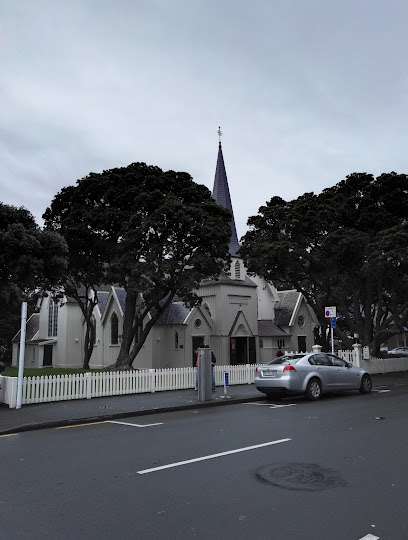
Fear Factory Wellington
Experience the spine-tingling excitement of Fear Factory Wellington, where horror meets adventure in a thrilling haunted attraction.

Katherine Mansfield Memorial Park
Explore the beauty and tranquility of Katherine Mansfield Memorial Park, a literary tribute surrounded by stunning gardens in Wellington.

Katherine Mansfield House & Garden
Discover the legacy of Katherine Mansfield at her historic house and garden in Wellington, a treasure for literature lovers and history seekers.

Ahumairangi - Wellington Town Belt (Tinakori Hill)
Explore Ahumairangi, Wellington's cherished nature preserve, offering breathtaking views, vibrant flora, and serene walking trails in the heart of the city.
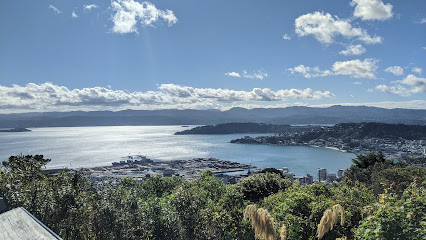
He Tohu
Explore New Zealand's foundational documents at He Tohu, a unique exhibit in Wellington that narrates the rich history and cultural heritage of the nation.

Old Government Buildings, Wellington
Discover the architectural beauty and rich history of the Old Government Buildings, a must-see historical landmark in Wellington, New Zealand.

Thorndon Heritage Listed Villa
Discover the charm of Wellington at Thorndon Heritage Listed Villa, where history meets modern comfort in a perfect self-catering escape.

Seddon Memorial
Explore the Seddon Memorial in Kelburn, Wellington: a stunning tribute to New Zealand's political heritage and breathtaking views.
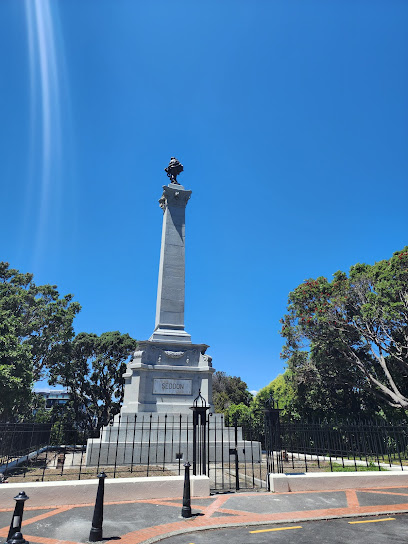
Richard Seddon Statue
Explore the Richard Seddon Statue in Wellington, a historical landmark celebrating the legacy of New Zealand's influential Prime Minister.

Goldie's Brae
Experience the serenity and historical significance of Goldie's Brae in Wellington, a captivating destination for history enthusiasts and nature lovers.

Unmissable attractions to see
Museum of New Zealand Te Papa Tongarewa
Explore the heart of New Zealand's culture and history at Te Papa Tongarewa, an interactive museum in Wellington that captivates visitors of all ages.

Space Place at Carter Observatory
Discover the universe at Space Place, Wellington's premier science museum and observatory, featuring immersive planetarium shows and engaging exhibits.

Otari-Wilton's Bush
Explore the enchanting Otari-Wilton's Bush, Wellington's premier botanical garden, where nature and tranquility unite in stunning landscapes.

Cable Car Museum
Explore Wellington's Cable Car Museum, where the captivating history of the city's iconic cable car system comes to life amidst stunning views.
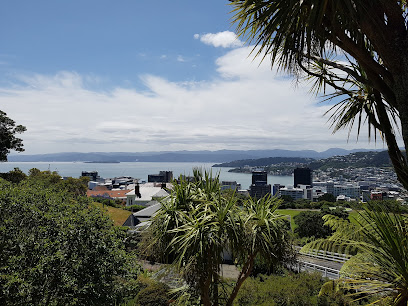
Old St Paul's
Discover the architectural beauty and rich heritage of Old St Paul's, a stunning Anglican church in Wellington, New Zealand, renowned for its historical significance and vibrant events.

Fear Factory Wellington
Experience the ultimate adrenaline rush at Fear Factory Wellington, where fear meets fun in a thrilling haunted attraction.

Katherine Mansfield House & Garden
Discover the life and legacy of Katherine Mansfield at her historic birthplace in Wellington, a unique museum celebrating New Zealand's literary heritage.

Essential places to dine
Dockside Restaurant & Bar
Experience exquisite seafood dining with stunning harbor views at Dockside Restaurant & Bar in Wellington.

Thistle Inn
Discover the historic charm and modern flavors at Thistle Inn in Wellington - where every meal tells a story.

Portlander
Discover the culinary excellence of Portlander in Wellington, where exquisite steaks meet vibrant atmosphere for an unforgettable dining experience.
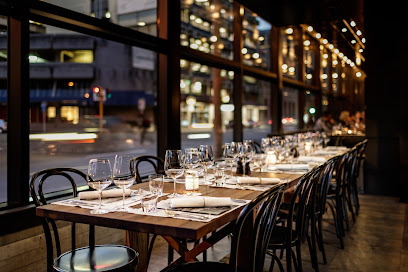
MariLuca Ristoro
Discover authentic Italian cuisine at MariLuca Ristoro in Wellington—where every meal is a delicious journey through Italy's rich culinary heritage.

Hillside Kitchen
Discover Hillside Kitchen: A Wellington dining experience blending local flavors with innovative cuisine in a cozy atmosphere.

Cafe 93
Experience delightful flavors at Cafe 93 in Thorndon - your go-to destination for exceptional coffee and cozy dining in Wellington.

Cafe Classic
Discover Café Classic in Thorndon, Wellington – where traditional Kiwi breakfasts meet modern culinary delights in a cozy setting.

Bellamys
Savor exquisite New Zealand cuisine at Bellamys in Wellington's iconic Beehive - where fine dining meets local flavors.

Aubergine
Discover the flavors of Wellington at Aubergine, where fresh ingredients meet innovative cuisine in a cozy setting.

Daisy's
Discover the flavors of New Zealand at Daisy's in Thorndon – where every dish is crafted with passion and served with warmth.

Markets, malls and hidden boutiques
Te Papa Store
Explore the Te Papa Store for unique gifts and souvenirs capturing New Zealand's rich culture and creativity in the heart of Wellington.

Recycle Boutique
Explore sustainable fashion at Recycle Boutique in Wellington, where unique pre-loved clothing awaits every eco-conscious shopper.

Souvenir Factory Shop
Explore the Souvenir Factory Shop in Wellington for authentic Kiwi gifts and unique New Zealand treasures that celebrate local culture.

Good As Gold
Explore unique fashion at Good As Gold, Wellington's boutique hub for quality clothing and accessories that define individual style.
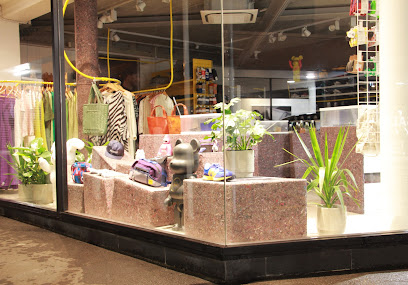
The Fabric Warehouse
Discover a vibrant fabric paradise in Wellington at The Fabric Warehouse, where creativity meets quality textiles for all your sewing projects.
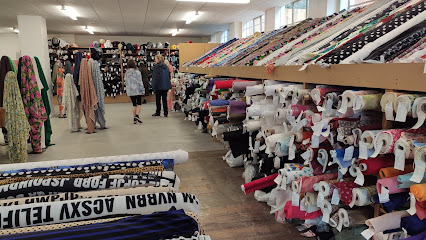
Cactus Outdoor Wellington
Discover top-quality outdoor gear and expert advice at Cactus Outdoor Wellington, your ultimate destination for adventure in New Zealand.

BoxHill
Explore BoxHill in Wellington for the latest in women's fashion, where style and sophistication come together for an exceptional shopping experience.

Tinakori Antiques
Explore a treasure trove of history and unique finds at Tinakori Antiques in Wellington's charming Thorndon suburb.
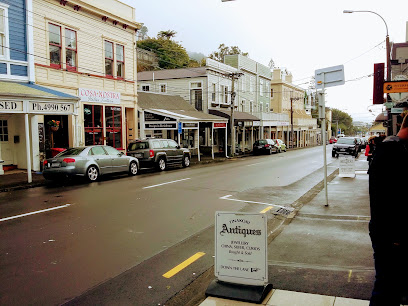
Possum Boutique
Immerse yourself in New Zealand fashion at Possum Boutique, featuring luxurious possum fur clothing and unique local designs in Wellington.

Welly Collective Boutique
Explore the heart of Wellington's creativity at Welly Collective Boutique, where local artisans bring you unique gifts and handcrafted treasures.

Essential bars & hidden hideouts
Thistle Inn
Experience the rich heritage and vibrant atmosphere of Thistle Inn, a historic pub in Wellington offering delightful cuisine and live entertainment.
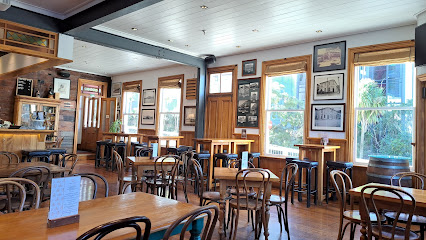
The Backbencher Gastropub
Discover the heart of Wellington's pub culture at The Backbencher Gastropub, where great food and a vibrant atmosphere await every visitor.

Flamingo Joe's Bar & Eatery
Discover the lively atmosphere and delicious offerings at Flamingo Joe's Bar & Eatery, a perfect stop for foodies and socializers in Wellington.

The Shepherds Arms Hotel
Experience the perfect blend of comfort and culinary delights at The Shepherds Arms Hotel in vibrant Wellington.

Sprig + Fern Thorndon
Experience the heart of Thorndon at Sprig + Fern, Wellington's beloved pub featuring craft beers and a delightful beer garden.
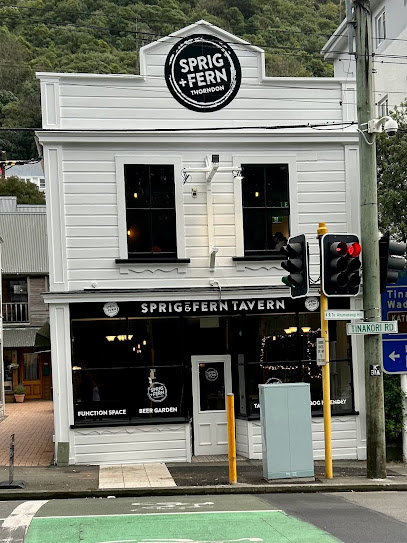
Juniper Gin Bar & Restaurant
Discover the exquisite flavors of Wellington at Juniper Gin Bar & Restaurant, where exceptional gin meets culinary creativity.

Cafe Classic
Discover Cafe Classic, a charming breakfast spot in Wellington's Thorndon, offering delicious meals and a warm atmosphere for a memorable dining experience.

Daisy's
Experience Wellington's culinary gem at Daisy's, where exquisite flavors and a warm atmosphere create unforgettable dining moments.

Chapman Taylor Cafe & Inn
Experience the vibrant atmosphere of Chapman Taylor Cafe & Inn, a charming bar in Wellington's Thorndon, offering delightful beverages and local culture.

Oviedo
Experience the authentic flavors of New Zealand at Oviedo, a top dining spot in Wellington for exquisite breakfast and lunch.

Local Phrases
-
- HelloKia ora
[kee-ah aw-rah] - GoodbyeHaere rā
[high-reh rah] - YesĀe
[eye] - NoKāore
[kaa-oh-reh] - Please/You're welcomeTēnā koe
[teh-nah koh-eh] - Thank youNgā mihi
[nah mee-hee] - Excuse me/SorryWhakapāha
[fah-kah-paa-ha] - How are you?Kei te pēhea koe?
[keh-ee teh pay-ha koh-eh] - Fine. And you?Māmā. Ā, koe?
[maa-maa. ah, koh-eh] - Do you speak English?Kōrero koe i te reo Pākehā?
[koh-reh-roh koh-eh ee teh reh-oh paa-keh-haa] - I don't understandKaore au e mohio
[kaa-oh-reh ow eh moh-hee-oh]
- HelloKia ora
-
- I'd like to see the menu, pleaseMe kite au i te pānui, tēnā
[meh kee-teh ow ee teh paa-noo-ee, teh-nah] - I don't eat meatKaore au e kai kau
[kaa-oh-reh ow eh kai kow] - Cheers!Kia ora!
[kee-ah aw-rah] - I would like to pay, pleaseMe utu au, tēnā
[meh oo-too ow, teh-nah]
- I'd like to see the menu, pleaseMe kite au i te pānui, tēnā
-
- Help!Āwhina!
[aa-fee-nah] - Go away!Haere atu!
[high-reh ah-too] - Call the Police!Karanga atu ki te Pirihimana!
[kah-rah-ngah ah-too kee teh pee-ree-hee-mah-nah] - Call a doctor!Karanga atu ki te kaiwhakaora!
[kah-rah-ngah ah-too kee teh kai-fah-kah-oh-rah] - I'm lostI wareware ahau
[ee wah-reh-wah-reh aa-how] - I'm illI mate ahau
[ee mah-teh aa-how]
- Help!Āwhina!
-
- I'd like to buy...Me hoko au...
[meh haw-kaw ow] - I'm just lookingKei te titiro ahau
[keh-ee teh tee-tee-raw aa-how] - How much is it?He aha te utu?
[heh ah-haa teh oo-too] - That's too expensiveHe nui rawa te utu
[heh noo-ee rah-waa teh oo-too] - Can you lower the price?Ka taea e koe te whakaiti i te utu?
[ka tah-eh eh koh-eh teh fah-kai-tee ee teh oo-too]
- I'd like to buy...Me hoko au...
-
- What time is it?He aha te wa?
[heh ah-haa teh wah] - It's one o'clockKotahi te hāora
[kaw-tah-hee teh haa-oh-rah] - Half past (10)Tekau ma rima
[teh-kaw mah ree-mah] - MorningAhiahi
[ah-hee-ah-hee] - AfternoonAhiahi
[ah-hee-ah-hee] - EveningPō
[paw] - YesterdayInapo
[ee-nah-paw] - TodayTenei ra
[teh-nay rah] - TomorrowApopo
[ah-paw-paw] - 1Tahi
[tah-hee] - 2Rua
[roo-ah] - 3Toru
[toh-roo] - 4Whā
[fah] - 5Rima
[ree-mah] - 6Ono
[oh-noh] - 7Whitu
[fee-too] - 8Waru
[wah-roo] - 9Iwa
[ee-wah] - 10Tekau
[teh-kaw]
- What time is it?He aha te wa?
-
- Where's a/the...?Kei hea te...?
[keh-ee heh-ah teh] - What's the address?He aha te wāhitau?
[heh ah-haa teh wah-hee-tow] - Can you show me (on the map)?Ka taea e koe te whakaatu i ahau (i runga i te mahere)?
[ka tah-eh eh koh-eh teh fah-kah-ah-too ee aa-how (ee roo-ngah ee teh mah-heh-reh)] - When's the next (bus)?Āhea te mutunga (waka)?
[aa-heh-ah teh moo-toon-gah (wah-kah)] - A ticket (to ....)He tiki (ki ....)
[heh tee-kee (kee ....)]
- Where's a/the...?Kei hea te...?
History of Thorndon
-
Before European arrival, the Thorndon area was inhabited by the Māori, specifically the Ngāti Toa tribe. The fertile land and proximity to the Wellington Harbour made it an attractive site for settlement. The Māori established themselves around the region, engaging in fishing, gardening, and forming strong community ties.
-
In the 1830s, Thorndon began to transform with European colonization. The arrival of the British in 1840 marked a significant change, leading to land purchases and settlement. Thorndon quickly became one of the most popular residential areas for early European settlers due to its proximity to the harbour and the burgeoning capital city of Wellington.
-
With Wellington being designated as the capital of New Zealand in 1865, Thorndon became the political heart of the nation. Key government buildings, including the original Parliament House, were constructed in the area, making it a focal point for political activities and decision-making.
-
Throughout the early to mid-20th century, Thorndon saw significant urban development, with the construction of various residential buildings, schools, and cultural institutions. The Thorndon School, established in 1878, became a vital part of the community, while churches and parks enhanced the area's cultural fabric.
-
Today, Thorndon is recognized for its rich architectural heritage, with many Victorian and Edwardian buildings preserved as part of its historical identity. The area is home to the Thorndon Historic Walk, which showcases significant sites and stories from its past, allowing visitors to step back in time and appreciate the deep-rooted history of this charming neighborhood.
Thorndon Essentials
-
Thorndon is easily accessible from various parts of Wellington. The suburb is approximately 15 minutes by car from the Wellington International Airport. You can take the Airport Flyer bus service, which operates frequently and connects to the city center. From central Wellington, Thorndon is just a short bus or train ride away. The Metlink bus service has several routes that stop in Thorndon, while the Wellington railway station is nearby, providing access to regional trains.
-
Thorndon is a compact neighbourhood, making it easy to explore on foot. Public transport options include buses and trains, with the Wellington Railway Station providing convenient access to the rest of the city and beyond. For those who prefer cycling, there are bike lanes and rental services available. Taxis and rideshare services like Uber are also readily accessible for longer distances.
-
Thorndon is generally a safe neighbourhood for tourists. However, as with any urban area, it is advisable to stay aware of your surroundings and keep personal belongings secure. Areas to be cautious of include dark alleyways and isolated parks at night. As a precaution, avoid displaying valuables and be vigilant in crowded places.
-
In case of an emergency, dial 111 for police, fire, or medical assistance. The nearest hospital is Wellington Regional Hospital, located a short distance away. It is recommended to have travel insurance that covers medical emergencies. For minor health issues, pharmacies are scattered throughout the neighbourhood, and many offer over-the-counter medications.
-
Fashion: Do dress appropriately for the weather and occasions; Wellington can be windy and chilly. Don't wear overly casual attire in upscale dining establishments. Religion: Do respect local customs, especially when visiting places of worship. Public Transport: Do offer your seat to those in need. Don't eat or drink on public transport. Greetings: Do greet locals with a friendly smile or 'Kia ora'. Don't be overly formal; casual interactions are appreciated. Eating & Drinking: Do try local cuisine, especially at cafes and restaurants. Don't waste food; leftovers can often be taken home.
-
To experience Thorndon like a local, visit the Old St. Paul's Cathedral, a stunning example of Gothic Revival architecture. Explore the Thorndon Farmers' Market on Saturdays for fresh produce and artisanal goods. Engage with local residents, as they are often friendly and willing to share insights about the neighbourhood's history. Don't miss the nearby Botanical Gardens, which offer beautiful walking paths and stunning views of the city.
Trending Landmarks in Thorndon
Nearby Cities to Thorndon
-
Things To Do in Blenheim
-
Things To Do in Masterton
-
Things To Do in Palmerston North
-
Things To Do in Nelson
-
Things To Do in Whanganui
-
Things To Do in Kaikoura
-
Things To Do in New Plymouth
-
Things To Do in Napier
-
Things To Do in Christchurch
-
Things To Do in Taupo
-
Things To Do in Greymouth
-
Things To Do in Rotorua
-
Things To Do in Hamilton
-
Things To Do in Gisborne
-
Things To Do in Tauranga










